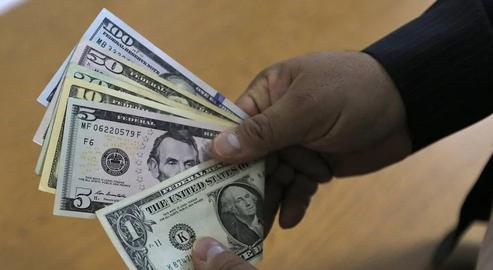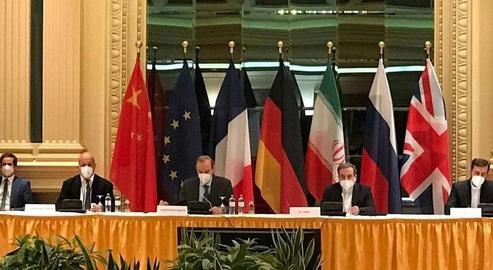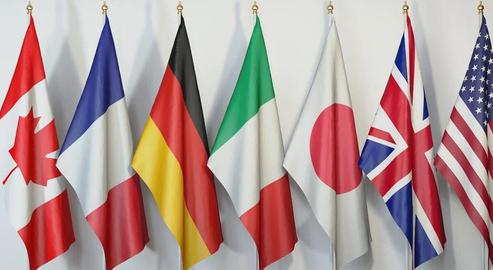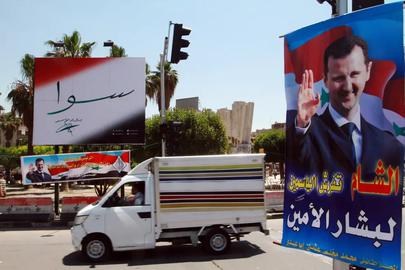The last time the US dollar traded at less than 22,000 tomans for two consecutive days was in late July 2020.
Ever since then, save for one day (January 19, 2020), the price of the dollar has exceeded this value. On October 20 last year it hit a record high of 32,000 tomans, which then gradually subsided.
A month and a half after the beginning of the Iranian calendar year 1400, the value of the dollar now appears to be in decline. Between March 27 and May 4, more than three thousand tomans have been shed from the price of each US dollar on the open market.
It is not clear what the situation will be by the time this report is published on Tuesday, May 4. But analysts predict this trend will continue for at least a few more days.
Why did the Value of the Dollar Decline?
In today's issue of the Iranian daily Donya-e Eghtesad, an article on the situation posits three possible causes for the dollar’s drop in value against the toman. The strongest is relative optimism about the outcome of indirect nuclear negotiations with the US.
The blind alley that has plagued Iran's economy for the past three years seems to have abruptly loosened up. Negotiations are still ongoing in Vienna. Even though public opinion does not seem to look on the recent developments with excitement or hope, as was the case in 2015, speculation about a possible fresh Iran-US agreement and the possibility of sanctions being lifted has somewhat shaken up the market.
If the negotiations fail, the market reaction will in all likelihood be strong and immediate. It can be said with relative confidence that if this happens, prices will rise rapidly again and may even exceed the previous record highs observed at the start of this year.
The situation may also worsen again if the negotiations drag on interminably. Tentative optimism turns into pessimism if subjected to a lengthy period of time without results. Added to the most significant issue in Iran’s foreign exchange market, namely the negative balance and the depletion of foreign exchange reserves, prices are almost bound to rise if the wait is too long.
On the other hand, if the talks come to fruition in the next few days or weeks, the price of the dollar may well fall further still. But that may be the only tangible effect on the market: the signing the JCPOA in 2015 did not lead to significant reduction in market prices in Iran.
Petrodollars Will Not Alter Prices in the Long Term
If the sanctions are lifted, Iran’s blocked resources will be released and oil export revenues will begin to flow in. Of course, some of these resources have already been spent; the governor of Iran’s Central Bank recently spoke about converting the blocked dollars of the National Development Fund outside Iran into rials, and said that printing money had led to a 30 percent growth in cash volume, in turn the main driver of last year's eye-watering inflation.
Simply put, most of the would-be dollars that have not yet arrived in Iran have already been converted into rials to pay government employees and retirees, and meet other national expenses. These dollars cannot be converted into rials again.
The only hope for a manageable budget in 2021-22 is oil revenues. If the sanctions are lifted, oil exports will boost Iran's foreign exchange balance in the next few years. If the country’s exports reached two million barrels a day, for example, at a price of $60 per barrel, revenues would top $44 billion by the close of the year: enormous compared to the past 12 months. But it would be impossible to pour these revenues into the market and even if it were, it would not have a lasting impact on reducing prices.
The Iranian foreign exchange market is thirsty for cheap dollars. The distribution of petrodollars might keep prices low for a short time, but as prices fall, an influx of buyers into the market would push them up again.
The next government, in order to control prices, would again have to force the Central Bank to inject dollars into the market, and as more dollars enter the market, more buyers would withdraw their money from banks and stock exchanges and enter the foreign exchange market instead. But petrodollars are limited, and at some point the Central Bank would be unable to keep up with demand. Prices would thus then rise again, driving buyers back out.
Oil resources are also limited. The revenues recouped over one or two years would still not address the negative balance of the last two to three years. The government is nominally indebted to the National Development Fund, and has to repay the fund for the amounts it has borrowed in previous years. It therefore cannot pour all the oil revenues into the market.
Finally, although expensive dollars are not pleasing to governments, for a variety of reasons, a low-priced dollar is not good for the government either. The government must sell dollars to the Central Bank at the price needed to balance its budget. Some assume the government has complete control over the market and keeps prices at a specific rate, but this is unlikely to be true; experience has shown that governments have never been able to control currency rates as they wish.
The developments of the coming days and weeks will therefore be pivotal; not just to our understanding of the situation ordinary Iranians might face in the year 1400, but of how far the government is able to manage it.
Related coverage:
Prices in Iran Continue to Soar Despite Better Exchange Rates
Iranians Shocked by the Overnight Devaluation of Their Currency
Ninety Days of Rocketing Dollar Value Compounds Iran's Inflation Nightmare
visit the accountability section
In this section of Iran Wire, you can contact the officials and launch your campaign for various problems



























comments